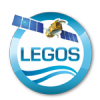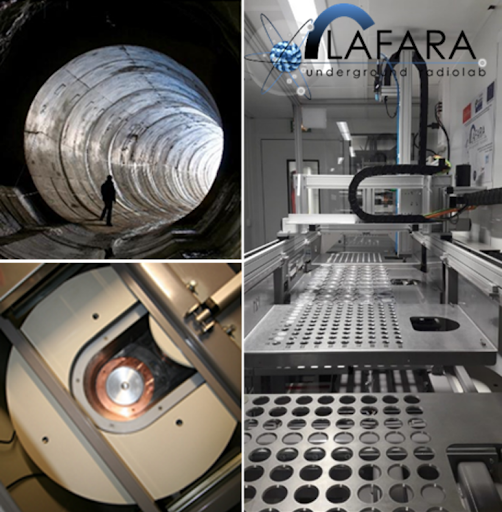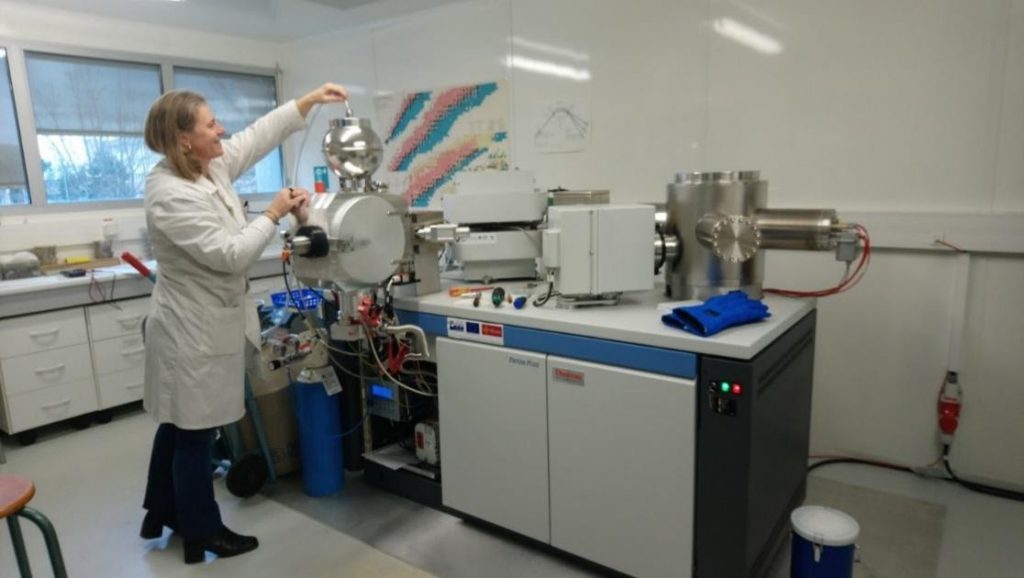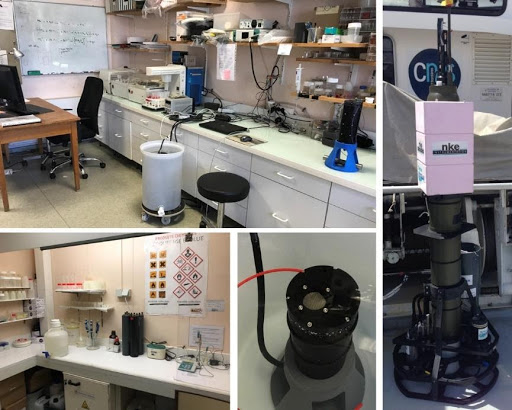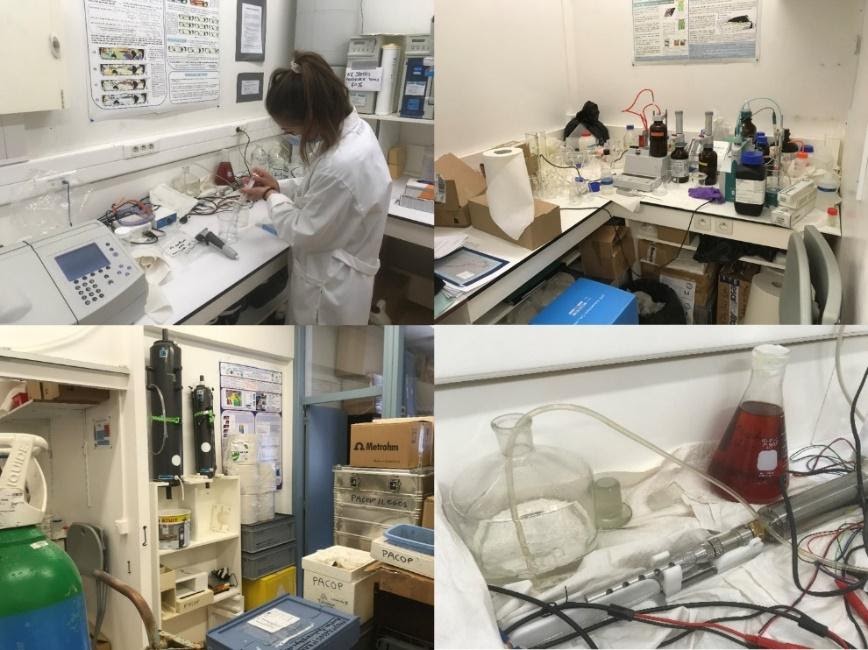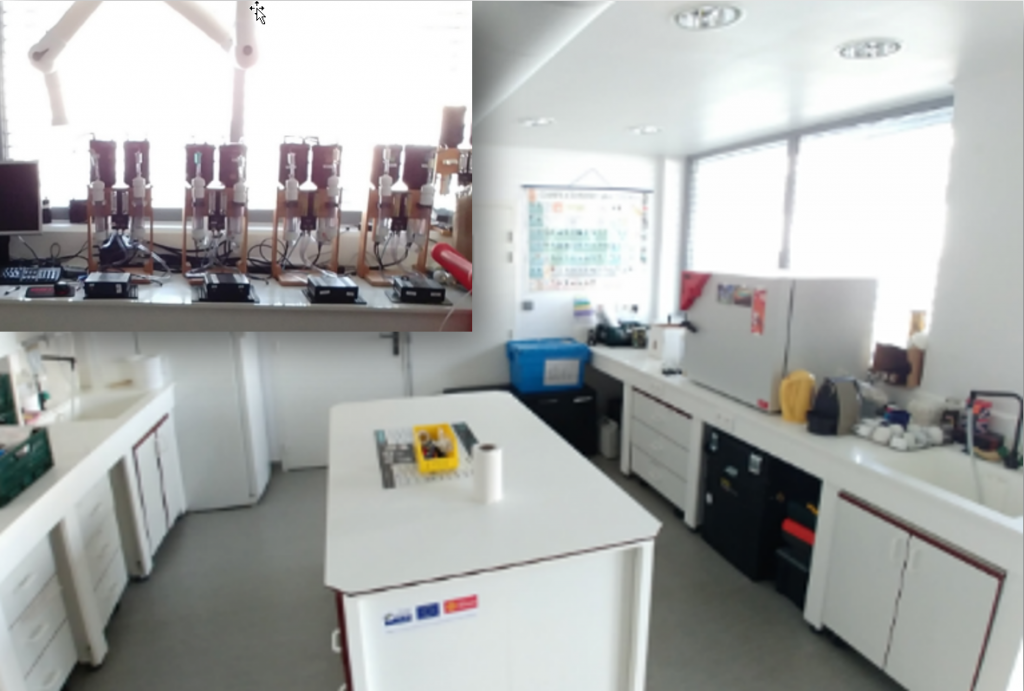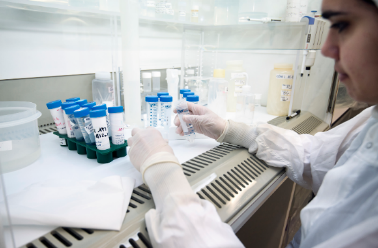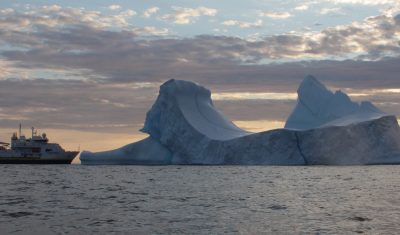Publisher: Direction – Updated on 27/05/2021
LEGOS has access to exceptional experimental platforms and has internationally recognized expertise in many areas of marine chemistry, from the analysis of trace elements and isotopes by mass spectrometry and nuclear spectrometry, to the analysis of ultra-low oxygen concentrations, and the development of electrochemical sensors for silicates, phosphates and nitrates.
Our instrumental platforms
LEGOS has access to many shared measurement platforms of the Observatoire Midi Pyrénées. It manages or participates in the management of some of them, including :
Laboratory of low radioactivity analysis, LAFARA
LAFARA is a laboratory for measuring very low levels of radioactivity by gamma spectrometry. It is equipped with five gamma spectrometers that allow the identification and quantification of radioelements present in a sample. Analyses are performed for scientific research, environmental monitoring and industry. LAFARA is based in an EDF tunnel in Ferrières-sur-Ariège under a 250 m (water equivalent) rock cover that provides a natural shield against cosmic radiation. It meets the requirements of ISO/IEC-17025. It is remotely controlled from LEGOS at the Observatoire Midi Pyrénées in Toulouse.
Plasma Source Mass Spectrometry Service, ICPMS
ICP-MS, Inductively Coupled Plasma Mass Spectrometry, allows the measurement of concentrations and isotopic compositions of many elements, at very low concentrations. Measurements are performed on liquid samples, or, via a coupling with a laser ablation system, in situ on solid samples. The department is equipped with a triple quadrupole ICPMS, iCap TQ, a High Resolution ICPMS, Element XR, and a MultiCollection High Resolution ICPMS, Neptune Plus. In addition, there are various introduction systems, including a gas chromatograph, Trace GC Ultra, a nanosecond laser and a femtosecond laser.
Solid Source Mass Spectrometry Service TIMS
Thermionization mass spectrometry is a historical skill of OMP geochemists. More than 800 isotopic analyses are performed per year on water, sediment, organic matter or rock samples, coming from the universe as well as from the abyssal depths and generally with very low concentrations of elements of interest (Sr, Nd, Pb, Li, W). However, these isotopic ratio measurements require very high precision. OMP’s TIMS TRITON + Thermo-Fisher is equipped with high-performance Faraday cages, is exceptionally bright and capable of detecting negative ions. It thus meets the requirements of the projects carried out by the geochemist users.
Our laboratories
Laboratoire ANESIS (Autonomous Nutrient Electrochemical Sensors In Situ)
This laboratory is dedicated to the development of autonomous electrochemical sensors for the in situ measurement of the concentration of nutrient salts such as silicates, phosphates and nitrates in seawater, in the framework of a partnership with the French company nke Instrumentation. It has a room for the preparation of solutions and storage of chemical products under continuous extraction with an extractor hood. It is equipped with 3 Metrohm® potentiostats (PGSTAT 128 N equipped with a low current module, PGSTAT 204 and μAutolab-III) including a Faraday cage, a Metrohm® pH meter 744 and a colorimeter (Autoanalyzer 3, Seal).
PACOP
In order to understand the role of small oxygen fluctuations in global biogeochemical cycles, PACOP is developing protocols for measuring dissolved O2 with quantified uncertainty, from sampling to analysis and post-processing, for ultra-low concentrations and strong gradients. Under these controlled conditions, both in the laboratory, on board oceanographic vessels and in situ, experiments (incubations, monitoring of additional parameters) may be proposed. Based on chemical methods (Winkler, standard) and an instrumental approach (electrochemical, optical), the platform is open to OMP (anoxia, environmental sensor) and moves towards low-cost development in a context of sustainable development and participatory, citizen-based science.
RadioLab
This lab space with negative filtered air pressure is used for the preparation of samples collected during field campaigns before analysis of radionuclides by alpha and gamma spectrometry (radium isotopes, beryllium-7, actinium-227, thorium-228, lead-210, cesium-137, …). It is equipped with benches, hood, oven, scales, press and 6 alpha scintillators. The atmosphere (temperature and pressure) of this 30 m2 laboratory is controlled.
Clean room
This ultra-clean laboratory, over-pressured with filtered air, allows the preparation of seawater samples for the measurement of concentrations and isotopic compositions of trace elements in the ocean, notably rare earths and iron, while avoiding contamination problems. Its 60m2 are specifically dedicated to marine samples. The preparation rooms are ISO-6 and 7 classified and are equipped with evaporation chambers and ISO-1 class particle-free laminar flow hoods. Pressure, temperature and humidity are continuously controlled and monitored by a fully automated system.
